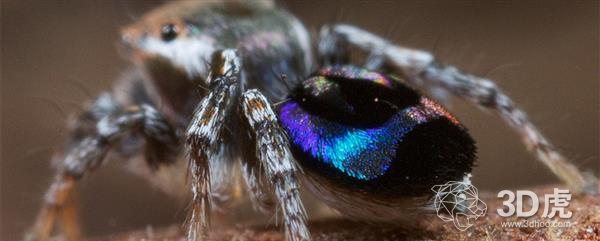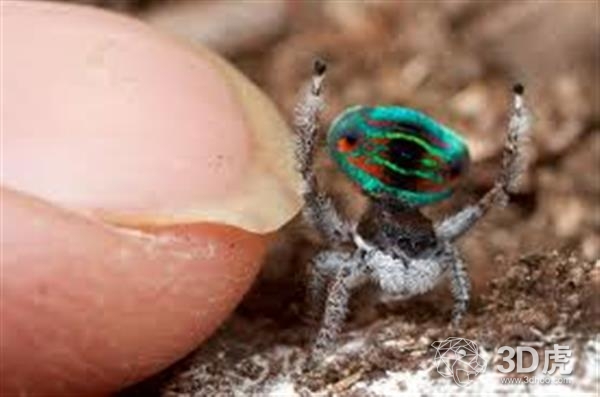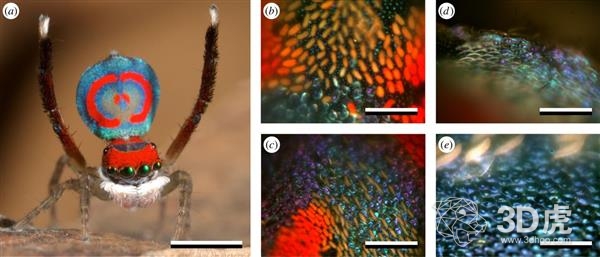In the past few years, 3D technology has been used in natural research because the precision of scanning and 3D printing methods allows scientists to observe the complex and fascinating structures and patterns developed by various animals and plants more closely. The latest breakthrough in this field is about the Australian Rainbow Peacock Spider. A group of researchers used nano 3D printing technology to figure out how it produced multicolor rainbow displays, and their findings can now be used in a variety of engineering applications.

Australian peacock spiders are probably the most striking members of the arachnid family, and rainbow peacock spiders are among the most impressive of them. The male rainbow peacock spider uses a bold color display to attract a partner. A five-mm spider is more impressive than a peacock because it can present a full-color rainbow. This is the only capable creature in nature, and the researchers want to know how it works.

The research project is an interdisciplinary collaboration led by Bor-Kai Hsiung, a postdoctoral researcher at the Scripps Institution of Oceanography at the University of California, San Diego. Under the guidance of Todd Blackledge and MatthewShawkey, study at Akron University. For his doctoral thesis, Hsiung is studying how nature modulates iridescence, and he approaches this problem from both extremes. In addition to the Rainbow Peacock Spider, he also studied the anatomy of the non-Iridescent Blue Tarantula.
He then formed an international team that included biologists, physicists and engineers from the University of Akron, the California Institute of Technology, the University of Nebraska-Lincoln, the University of Ghent, Belgium, the University of Groningen, the Netherlands, and Australia. . They set out to determine how the rainbow color of the Rainbow Peacock Spider works. The team used optical and electron microscopy, hyperspectral imaging, imaging scatterometry, and optical modeling. These techniques allow them to create some common assumptions about how the rainbow color of the spider passes its scale and then turn to 3D printing to test these assumptions.
Prototypes were built using specialized nano-3D printing techniques and experiments were performed, which finally proved that iridescence was produced by specialized abdominal scales. The scales of the spider combine the airfoil microscopic three-dimensional contours of the nanoscale diffraction grating structure on the surface. The interaction between the surface nano-diffraction grating and the microscopic curvature of the scale causes the light to separate and separate into its component wavelengths to produce a strong iridescence and draw our attention. Separation and isolation of light is achieved by finer angles and smaller distances than can be achieved by current man-made engineering techniques.

Radwanul Hasan Siddique, a research associate at the California Institute of Technology, said: "As an engineer, I found the color of these spiders fascinating. How can these long-term evolutionary complexes transcend ergonomics. Even with high-end manufacturing technology, we can't. Copy the exact structure. I don't know how these spiders put together these strange structural patterns!"
The discovery of how rainbow peacock spiders produce their own small rainbows may prove to be a major development in engineering and other fields, and its scale mechanism may affect new breakthroughs in color and light technology. The results of the study may help overcome the limitations of current spectral operations and reduce the size of the spectrometer. This can be used for applications that require fine spectral resolution in a very small package, especially for space exploration missions or for wearable chemical detection systems in industrial environments.
NINGBO BRIGHT MAX CO., LTD. , https://www.equine-tool.com